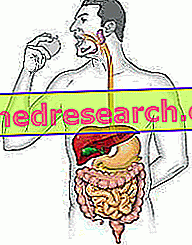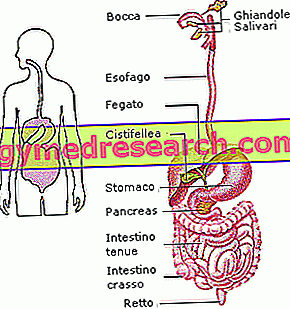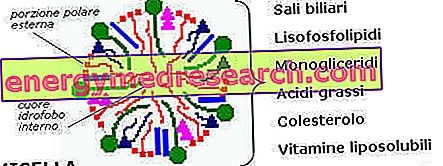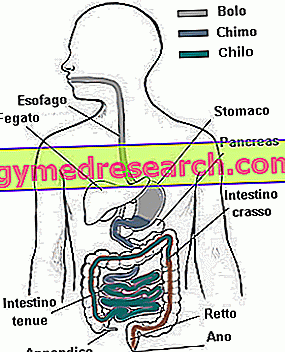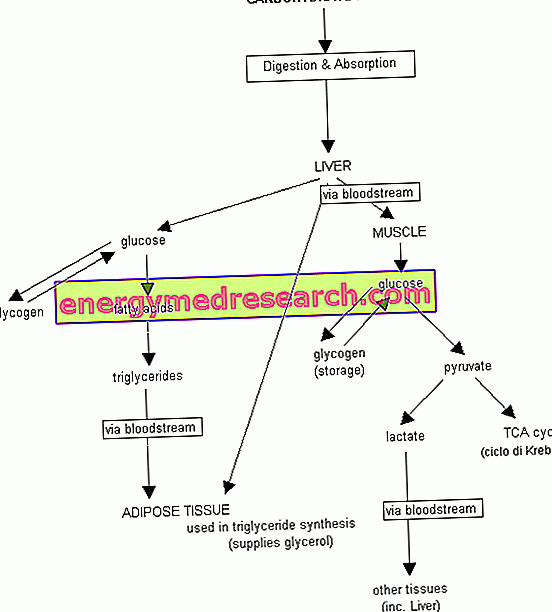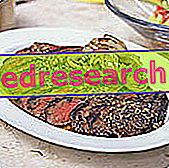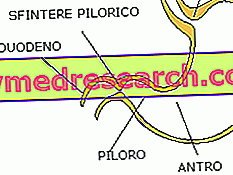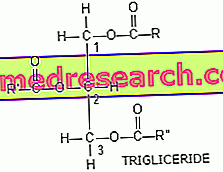What is Secretin Secretin is a peptide hormone of 27 amino acids, with a particular role in the history of physiology: released by S cells of duodenal crypts, secretin is the first hormone discovered by man, thanks to studies by Bayliss and Starling in 1902. The release of secretin is stimulated by the descent of the gastric pH, hence by the increase in the acidity of its contents
Category food digestion
Water requirement Water is an essential component of our body; in the adult it represents over 70% of the total mass (in the child it is even higher) and its systemic deficiency can compromise the well-being, health and (in the worst case scenario) the survival of the person. The risk increases significantly in old age, when the body is more prone to dehydration and the brain transmits / perceives only a few signs of "thirst"
Definition Digestion, which takes place in the oral cavity, in the stomach and in the first part of the intestine, is a physiological process mediated by a series of chemical-physical transformations, through which the organism changes foods into substances that can be absorbed and assimilated . Numerous organs participate in digestion, which together constitute a long tube called digestive system
The digestive system is formed by a set of hollow organs which, as a whole, as the name suggests, preside over the introduction of food, their subsequent digestion, the absorption of the nutrients they contain and the elimination of unnecessary ones or present in excess. The main functions of the digestive system are therefore four: ingestion, digestion, absorption and defecation
See also: malabsorption micelle At the level of the small intestine, pancreatic lipases digest fatty acids, giving rise to many fine aggregates called micelles. Within these small "transporters", essential for conveying the lipophilic molecules in the cells responsible for their absorption, are the products of lipid digestion: cholesterol, vitamins, bile salts monoglycerides and fatty acids resulting from the digestion of triglycerides lysophospholipids and fatty acids deriving from the digestion of phospholipids Fat absorption occurs mainly in the middle section of the small intestin
Bolus The food bolus is that mush of food mixed with saliva that is formed in the mouth during chewing, thanks to the mechanical activity of the teeth, compacting the tongue and lubricant of the saliva. Salivary enzymes, for their part, operate a partial digestion of food, transforming starches into oligosaccharides and dextrins
Carbohydrate digestion begins in the oral cavity and continues into the intestine, where the various nutrients are absorbed. The purpose of this process is the hydrolysis of disaccharides, oligosaccharides and polysaccharides in the single monosaccharides that make them up, in order to make them absorbable by the intestinal mucosa
Protein structure Proteins are formed by the union of simpler molecules called amino acids that bind together through peptide bonds. Two amino acid molecules form a dipeptide, three a tripeptide and so on. We talk about polypeptide when this chain is made up of less than 100 amino acids and proteins when the number of individual units exceeds this threshold
The gastrointestinal digestive process consists of three phases. 1) CEPHALIC PHASE: the increase in gastric secretion starts a little earlier than the meal. As in the case of saliva, this mechanism aims to prepare the stomach to receive the bolus. The sight, the scent, the noise of cutlery, dishes, cooking and even the thought of food, produce a series of stimulatory signals directed to the central nervous system
With the diet we introduce lipids in the form of: triglycerides (98%), cholesterol, phospholipids and fat-soluble vitamins (2%). A triglyceride consists of a molecule of glycerol esterified with three fatty acids. The digestion of lipids is deeply conditioned by their poor solubility in water, which is the fundamental element within the digestive tract
What is Secretin Secretin is a peptide hormone of 27 amino acids, with a particular role in the history of physiology: released by S cells of duodenal crypts, secretin is the first hormone discovered by man, thanks to studies by Bayliss and Starling in 1902. The release of secretin is stimulated by the descent of the gastric pH, hence by the increase in the acidity of its contents



